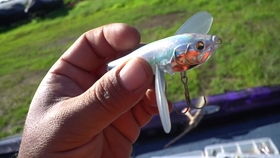Introduction:
Fishing is an ancient and cherished pastime that requires patience, skill, and a deep understanding of the water's secrets. One of the most effective methods for catching fish is by locating and fishing in fish holes. These natural or人工挖掘的水下凹槽, often filled with aquatic life, are like treasure troves for anglers. In this article, we delve into the art of how to dig fish holes and share essential fishing techniques to maximize your chances of a successful catch.

Understanding Fish Holes:
Before we dive into the practical aspects of digging fish holes, it's important to understand what they are and why they are so productive. Fish holes are areas in a body of water where fish congregate due to factors such as shade, protection from predators, or access to food. These spots can be found in rivers, lakes, ponds, and even in the ocean.
How to Dig a Fish Hole:
Location, Location, Location:
- Start by scanning the water's surface for signs of fish activity. Look for areas with disturbed water, bird activity, or fish fins breaking the surface.
- Consider the topography of the water body. Fish often prefer to be in holes that are protected from strong currents and have a good supply of food.
Tools and Equipment:
- You'll need a shovel, a spade, or any other digging tool that is suitable for the type of ground you are working with.
- A bucket or container to collect water from the hole for cleaning.
The Digging Process:
- Begin by clearing away any debris on the surface of the water where you plan to dig.
- Start digging at a slight angle to prevent the hole from becoming too deep and to create a natural entrance that fish can easily access.
- As you dig, remove any large rocks or obstacles that could impede fish access.
- Aim to create a hole that is about 2-3 feet deep and 5-6 feet in diameter, depending on the size of the fish you are targeting.
Finishing Touches:
- Once the hole is dug, smooth out the edges to make it more fish-friendly.
- If the water is murky, use the bucket to scoop out some of the water to help clear the area.
- Add some twigs or branches to the bottom to provide additional cover for fish.
Fishing Techniques for Fish Holes:
Choose the Right Bait:
Research the types of fish that inhabit the water body and use bait that appeals to them. Live bait, such as worms, minnows, or crayfish, can be very effective.
Timing is Key:
- Fish are most active at dawn and dusk. These are the best times to fish in a fish hole.
- If you're fishing during the day, try to cast into the hole when the sun is low to provide some shade.
Use the Right Gear:
- Select a rod and reel that match the size of the fish you're targeting.
- Use a sensitive line that can detect even the slightest nibble.
Patience and Observation:
- Be patient. It can take time for fish to notice your bait in a fish hole.
- Keep an eye on your line and be ready to set the hook when you feel a bite.
Adjust Your Technique:
- If you're not getting bites, try changing your bait, adjusting your lure, or moving to a different part of the hole.
- Pay attention to the weather and water conditions. Fish behavior can change with the weather, so adapt your strategy accordingly.
Conclusion:
Digging fish holes and fishing in them can be a highly rewarding experience. By understanding the basics of how to dig a fish hole and applying the right fishing techniques, you can increase your chances of a successful catch. Remember that fishing is as much about the experience as it is about the catch, so take the time to enjoy the beauty of nature and the tranquility of the water. Happy fishing!












